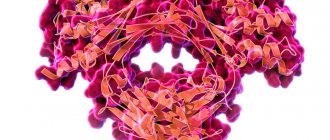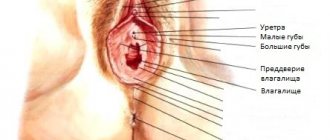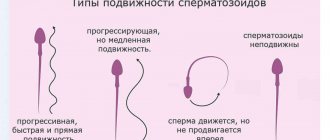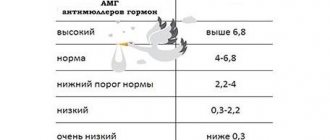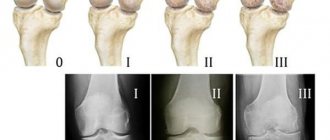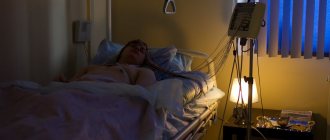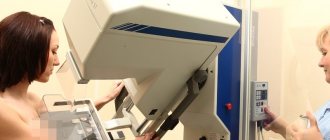Beginning of fertile age
takes from about 15 years old.
It is believed that in men it ends after the age of 60, but there are many cases of children being born in 70-80 year old men. For the female half of the population, everything is different. A woman is ready to conceive with the onset of menarche (first menstruation), but a woman’s fertility ends with the onset of menopause , when the functions of the gonads (ovaries) fade away and the supply of oocytes available from birth is completely exhausted. Therefore, even theoretically, with the onset of menopause, a woman is not able to continue her family.
What is fertility in a woman?
Female fertility is the direct ability of a woman to conceive and bear offspring. From birth, a woman’s body contains several million eggs, which are born during intrauterine development. It is believed that by adolescence their number decreases to about 400 thousand. It is important to understand that these cells in the body do not renew themselves, as sperm do in men.
From the moment of the onset of puberty (when girls begin menstruation), the eggs, which were previously in a “dormant” state in the ovaries, begin to gradually mature. Once a month, approximately in the middle of the menstrual cycle, a mature egg is released from the follicle - this process is called ovulation, and it is directly related to a woman’s ability to conceive a child. After fertilization by a sperm, the egg gradually enters the uterus, where it attaches to the walls of the uterus for further growth and development of the fetus.
Female fertility depends not only on ovulation, but also on other conditions of the body:
- it is necessary that the fallopian tubes, in which the egg is to meet the sperm, must have normal patency;
- the endometrium must be of sufficient thickness for successful implantation of the embryo for subsequent development;
- The uterus and cervix must be healthy to carry a baby to term and reduce the likelihood of premature birth.
All processes of a woman’s reproductive system are constantly influenced by various hormones produced by the body. Therefore, hormonal levels are also extremely important for female fertility.
The level of female fertility is usually assessed by three factors - the ability to conceive, bear and give birth to a child. It is believed that if a woman is capable of only 2 out of three factors, then fertility is low, if she is capable of all 3, then fertility is normal. High fertility is said to exist if a woman is able to conceive, bear and give birth to several children in a row.
If difficulties arise with conceiving naturally, the problems can be solved through in vitro fertilization (IVF) in Ukraine at the Reproductive Medicine (ART) Clinic named after Academician V.I. Grishchenko
Sources
- Khan KN., Fujishita A., Suematsu T., Ogawa K., Koshiba A., Mori T., Itoh K., Teramukai S., Matsuda K., Nakashima M., Kitawaki J. An axonemal alteration in apical endometria of human adenomyosis. // Hum Reprod - 2021 - Vol - NNULL - p.; PMID:33889963
- Ussher JM., Perz J., Hawkey AJ. A randomized controlled evaluation of an educational resource to address fertility concerns after cancer. // Psychooncology - 2021 - Vol - NNULL - p.; PMID:33860553
- Takae S., Furuta S., Keino D., Shiraishi E., Iwahata Y., Oyama K., Iwahata H., Nishiya Y., Kawaguchi K., Obayashi J., Tanaka K., Sawada S., Suzuki Y ., Sugishita Y., Deura I., Horage Y., Nagae H., Kondo H., Sakamoto M., Mori T., Kitagawa H., Suzuki N. Surgical management of unilateral oophorectomy for ovarian tissue cryopreservation in high-risk children and adolescents with varied backgrounds. // Pediatr Surg Int - 2021 - Vol - NNULL - p.; PMID:33855613
- Li H.M., Tan X., Zhang S., Yao J., Li H.G. Transfer- or “transmission”- RNA fragments? The roles of tsRNAs in the reproductive system. // Mol Hum Reprod - 2021 - Vol - NNULL - p.; PMID:33837423
- Dada EO., Akinola MO., Owa SO., Dedeke GA., Aladesida AA., Owagboriaye FO., Oludipe EO. Efficacy of Vermiremediation to Remove Contaminants from Soil. // J Health Pollut - 2021 - Vol11 - N29 - p.210302; PMID:33815900
- Tseng LM., Lien PJ., Huang CY., Tsai YF., Chao TC., Huang SM. Developing a Web-Based Shared Decision-Making Tool for Fertility Preservation Among Reproductive-Age Women With Breast Cancer: An Action Research Approach. // J Med Internet Res - 2021 - Vol23 - N3 - p.e24926; PMID:33729164
- Wang B., Farooq Z., Chu L., Liu J., Wang H., Guo J., Tu J., Ma C., Dai C., Wen J., Shen J., Fu T., Yi B High-generation near-isogenic lines combined with multi-omics to study the mechanism of polyma cytoplasmic male sterility. // BMC Plant Biol - 2021 - Vol21 - N1 - p.130; PMID:33673810
- Martin H.L., Ullah S., Abbas N., Scott-Hoy A., Kichenadasse G., Karapetis CS., Roy A., Sukumaran S., Ross DM., Khattak MA., Koczwara B. Predicting chemotherapy-induced menopause using baseline and post-chemotherapy anti-Müllerian hormone levels: Results of a pilot study. // Cancer Rep (Hoboken) - 2021 - Vol - NNULL - p.e11342; PMID:33660428
- Xue JS., Yao C., Xu QL., Sui CX., Jia XL., Hu WJ., Lv YL., Feng YF., Peng YJ., Shen SY., Yang NY., Lou YX., Yang ZN . Development of the Middle Layer in the Anther of Arabidopsis. // Front Plant Sci - 2021 - Vol12 - NNULL - p.634114; PMID:33643363
- Yu H., Li Q., Li Y., Yang H., Lu Z., Wu J., Zhang Z., Shahid MQ., Liu X. Genomics Analyzes Reveal Unique Classification, Population Structure and Novel Allele of Neo-Tetraploid Rice. // Rice (NY) - 2021 - Vol14 - N1 - p.16; PMID:33547986
Fertile days
Fertile days are considered to be those days of the menstrual cycle in which the likelihood of becoming pregnant is greatest. This period begins 5 days before ovulation and ends a couple of days after it. This is called the fertile window or fertile period. In order to determine the days of fertility, you can count on the calendar - it is assumed that ovulation occurs in the middle of the cycle, and from this date 5 days in one direction and 2 days in the other direction are counted. But this method is not accurate, since each organism is individual and the release of the egg may occur on other days.
You can determine a woman’s fertile days in other ways:
- Based on basal temperature. It is measured every morning in the rectum, without getting out of bed, and entered into a chart. Ovulation is indicated by a slight drop in temperature followed by a sharp increase.
- By cervical discharge. On fertile days, they become more voluminous, and their consistency also changes - they become stretchy, similar in appearance to egg white.
- According to ovulation tests. You can buy them at the pharmacy. The procedure is similar to pregnancy tests - the test strip is dipped into a container with urine. But the procedure must be carried out daily; it is recommended to start approximately 5 days before expected ovulation. When the test shows two equally bright stripes, this means the female body is maximally ready to conceive in the next 24 hours.
In addition to the listed methods, a woman can undergo an ultrasound examination to determine such days, but this method is not used so often. By determining fertile days, a woman significantly increases her chances of pregnancy in the current menstrual cycle.
Mobility
A slow or immobile sperm will not reach the egg and conception will not occur. If the egg is fertilized by a sperm with reduced motility, the pregnancy may be terminated.
It is important to evaluate not only the speed, but also the nature of the movement. According to these parameters, sperm are divided into four categories:
- A - rapid forward movement
- B - slow or sluggish forward movement
- C - non-forward movement
- D - motionless.
Normally, at least 32% of all sperm are from group A and B. Anything lower is the most common deviation, which is called asthenozoospermia.
If there are more than 60% of immobile sperm, a viability test is performed. 58% or more live sperm are considered normal, less is pathology. The more immobile and dead sperm, the worse.
There are no specific causes of asthenozoospermia. These are the same unfavorable factors that reduce concentration. Doctors include not only infections and inflammations, but also harmful behavioral and environmental factors: smoking, alcohol abuse, stress, living in a city with a poor environmental situation.
Impaired motility often occurs when sperm are deformed - without a tail, it is difficult for a sperm to move through the cervical mucus to the egg.
Factors affecting fertility
It is worth understanding that the level of female fertility is not an immutable indicator given at birth. It is influenced by many factors, including:
- Age (every year, eggs are released from the ovaries less frequently, cycles without ovulation occur more often);
- Too much or too little weight (affects hormonal levels);
- Stress (causes hormonal imbalance);
- Early menopause;
- Some diseases affecting hormonal balance (diabetes mellitus, polycystic ovary syndrome and others);
- Obstructed fallopian tubes;
- Some gynecological diseases (including non-inflammatory ones);
- Numerous surgical interventions in the uterus (primarily abortions);
- Bad habits.
When assessing female fertility, the following factors should always be taken into account. Some of them lead to the inability to get pregnant, while others affect the ability to bear a child.
Violations of female fertility can be permanent - it is impossible to get pregnant naturally, or temporary - if negative factors are eliminated, conception and birth of a child is possible.
Quantity
A distinction is made between sperm concentration and total number. The first is the number in one ml., the second is in the entire material. The concentration rate is from 15 million/ml, the quantity is from 39 million for the entire ejaculate.
If there are fewer sperm than normal, this is oligozoospermia; when there are none at all, this is azoospermia. A decrease is not as dangerous as a complete absence. But even in this case, there is a way out - drugs or surgery, and when cure cannot be done - IVF with testicular puncture to obtain sperm.
There are many causes of oligozoospermia. It occurs with varicocele - varicose veins of the spermatic cord, sexually transmitted infections, genitourinary tract obstruction or hormonal imbalance.
Azoospermia in half of the cases is the result of a genetic factor. The normal set of sex chromosomes in men is XY. If one part of the Y chromosome breaks down, a man will not produce sperm. To identify this, the doctor sends the man for karyotyping - analysis of the chromosome set.
How to increase a woman's fertility?
If you discover any health problems that prevent you from conceiving a child, you must first begin adequate treatment prescribed by your doctor. If necessary, both drug therapy and surgical intervention can be prescribed; treatment should not be neglected.
But beyond diseases and health conditions, there are many factors that can help improve your fertility and give birth to a healthy baby. The following rules can increase the ability to conceive and give birth to a baby:
- Regular sex life (at least 2-3 times weekly);
- Balanced nutrition (refusal of low-calorie diets, inclusion of various foods in the diet, exclusion of unhealthy foods - fried, too fatty, pickled, and so on);
- Complete cessation of bad habits (alcohol and smoking);
- Taking vitamin complexes prescribed by your doctor;
- Moderate physical activity;
- Reduce caffeine consumption;
- Minimizing stress;
- Maintaining water balance (daily compliance with the norm of clean water is approximately 2 liters);
- Refusal to take painkillers during ovulation, as they can negatively affect the entire process.
All these recommendations can have a beneficial effect on a woman’s fertility, increasing the likelihood of conception and the birth of a healthy baby. Therefore, these rules should be followed regardless of the level of fertility and the presence of unsuccessful attempts to become pregnant in the past.
If pregnancy does not occur within a year after the start of active attempts, you should think about the reasons, for which you should definitely consult a gynecologist-reproductologist. With its help, the body will be examined and the level of female fertility will be determined, and, if necessary, competent treatment will be prescribed.
ONLINE CONSULTATION
Kruger index
The morphological index, also known as the Kruger index (KFI - in foreign sources), has been used since 1986. To calculate it, you should divide the number of sperm of normal structure by the number of sperm with abnormalities (as a percentage). The assessment takes into account the size and diameter of the head, the length and condition of the tail. If the sperm with abnormalities is more than 70%, then the man is unlikely to be able to conceive a child naturally.
Conception is considered possible if the Kruger index is 4% or higher.
FAQ:
✅ What is fertility?
In simple terms, in humans, fertility is the ability of a sexually mature man to conceive, and a sexually mature woman to conceive, bear and give birth to a healthy child.
✅ Fertility window what is it?
The fertile window or fertile days in women is the period of the menstrual cycle in which the likelihood of becoming pregnant is greatest. It begins 5 days before ovulation and ends a couple of days after it. The calculation of the fertile period is based on the fact that sperm is active for up to 5 days and fertilization during ovulation can occur from sexual intercourse that occurred during this period.
✅ What is ovulation in women?
The release of a mature egg from the follicle is called ovulation. This happens once a month, usually in the middle of the menstrual cycle (two weeks before menstruation). Next, the egg gradually moves along the fallopian tube and when it meets a sperm, fertilization occurs. If fertilization does not occur, the egg dies in about a day.
✅ How to calculate fertile days?
To calculate fertile days, take the five-day period before ovulation and a day or two after. All this is individual and depends on the correct calculation of ovulation. In the article we have given several ways to help you make the calculation most accurately.
✅ How long does it take for fertilization to occur after intercourse?
Now that you know more about how fertilization occurs in humans, let's figure out how long it takes. On average, it takes male cells 3-5 hours to penetrate the fallopian tubes. However, these indicators are individual for each person. Depends on the following factors:
- Ovulation and possible fertilization of the egg after it has left the ovary (12-24 hours).
- Sexual intercourse. The most favorable period is 1 day before ovulation and 4-5 days after.
Indicators depend on genetics and other factors. If the fertilized egg does not attach to the uterine cavity, it dies. It is believed that you can talk about pregnancy after 8 weeks. In the early stages there is a high risk of spontaneous miscarriage.
Calculation formula
A macroeconomic indicator is used to assess the birth rate of the population in a certain region, region, country, or in the world. It reflects the full average number of newborn children per woman of reproductive age. The general formula for calculating the overall coefficient is K=N/a*1000, where:
- K – general fertility level (ppm);
- N – number of children born during the study period;
- a – the total number of women of childbearing age living in the study area.
Pregnancy at 40
Until the age of 30, a healthy woman can become pregnant with a probability of up to 20%. From 30 to 40 years of age this possibility drops to 5%. If difficulties arise, special clinics can help. For example, during menopause, medical procedures increase the percentage to 30%.
Today there is a tendency towards conscious late pregnancy . Since female representatives want to realize themselves in a career, both the need for personal development and from the point of view of capital accumulation, in order to create good conditions for raising a child.
Opinions differ on this matter. Some believe that it is better to give birth before the age of 35, so that there are no exacerbations of chronic diseases that negatively affect the bearing of the fetus: the risk of miscarriage, toxicosis.
Others say it wakes up the body. The production of hormones by the ovaries and thyroid gland is activated, and energy appears.
Success in your career, reliable financial status and life experience allow you to worry significantly less, which has a positive effect on pregnancy. And modern medical technologies will make it possible to avoid fetal developmental disorders.
Age and quality of germ cells
It is so inherent in nature that male reproductive cells are constantly produced, while female ones have their own reservoir and grow old with age and are exposed to various negative factors. During the process of maturation, the egg undergoes two cell divisions; with age, incorrect division is possible, which increases the risk of chromosomal abnormalities.
“Incorrect” eggs can cause miscarriage and genetic abnormalities of the fetus. Having become pregnant at the peak of fertility - at 20-30 years old, the risk of spontaneous abortion is the smallest, up to 15%; by the age of 40, fertility decreases and the chances of successful conception and trouble-free pregnancy are reduced.
